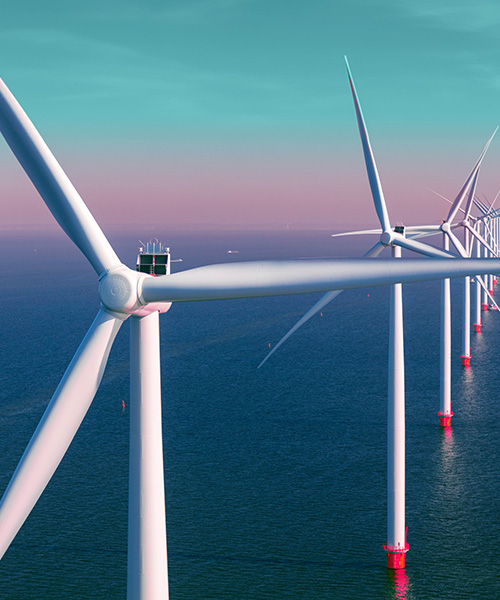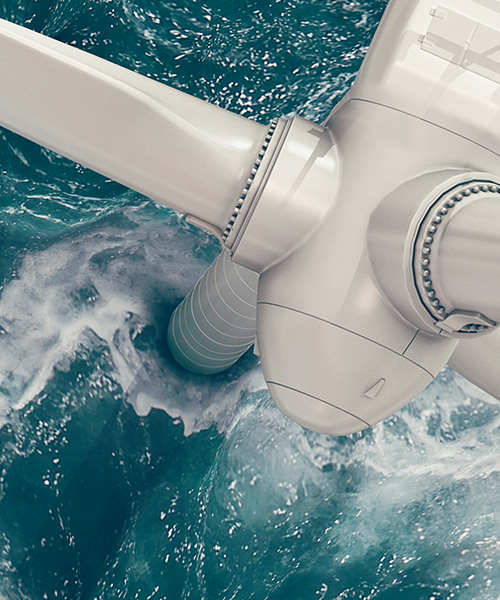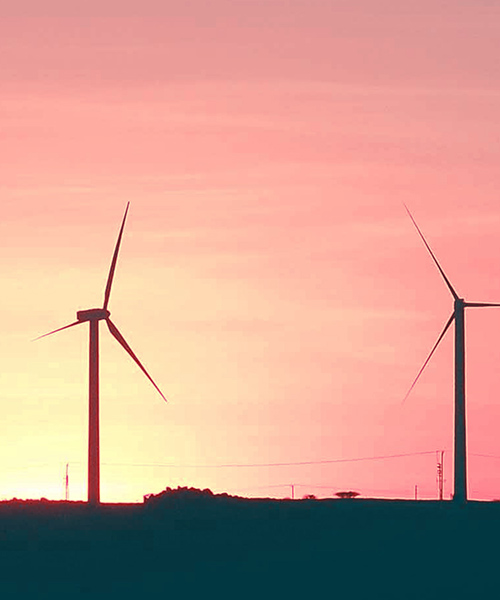April 14, 2022 • 3 min read
Can offshore wind accelerate the energy transition?
Offshore wind power is infinite, and the world needs thousands more offshore wind farms to harness this low-carbon energy.
The ocean winds are an inexhaustible source of renewable energy. According to the International Energy Agency (IEA), offshore wind energy could power every home and business on earth. However, most of this potential wind power is going to waste. The only way to capture it is with tens of thousands more offshore wind turbines spinning on coastlines on every continent.
The world’s net-zero ambitions depend on making this a reality. Our energy systems already benefit from over 35 GW of global installed capacity of offshore wind power (GWEC). But the greatest challenge is to push this output into the thousands over the coming decades.
How does offshore wind work?
Offshore wind energy refers to renewable electricity produced by wind turbines installed in shallow waters of less than 50 m deep, unless it’s a floating offshore wind platform. They’re usually located within 30 km of the coastline. Coastal winds help to turn the wind turbine blades, spinning a shaft connected to a generator. This generator turns the kinetic energy into electricity, which is sent to substations and fed into the electricity grid or distributed to industrial users.
Wind turbines in offshore wind farms tend to be bigger than the turbines used for onshore wind farms. The largest offshore wind turbine operating today can generate up to 14 MW of electricity, which can power over 10,000 homes at full capacity. However, with increasing demands to lower the cost of electricity, turbine technology is evolving at a rapid pace and +15 MW prototype turbines are now in production.
What are the advantages of offshore wind?
Both offshore and onshore wind farms have unique advantages. The installed capacity of offshore wind is already an important contributor to our global energy mix, but global decarbonization targets depend on many thousands more onshore and offshore wind turbines.
A key advantage of offshore wind farms is that offshore wind speeds tend to exceed those on land, with less disruption from undulating landscapes. The wind often blows more consistently offshore than it does on land, too. These factors increase energy output because the turbines are consistently spinning for longer. This usually leads to higher power generation from offshore wind farms.
Another advantage of offshore wind farms is that they are less disruptive to most landscapes, as these wind turbines are often located beyond the horizon. Surrounding populations are therefore less likely to see and hear these turbines operating. And with negligible impacts on most people, power generators can also install bigger wind turbines, and more of them.
New wind technologies such as floating offshore wind turbines mean energy companies can also explore deeper waters, too, unlocking even more untapped wind resources.
Why offshore wind is key to the energy transition
Offshore wind is a renewable energy source. However, it also shares some characteristics with traditional fossil fuel-led baseload electricity.
Offshore wind tends to blow more consistently throughout the day and night. That means offshore wind farm output more closely resembles coal or gas-fired energy. This enables a smoother transition to a higher share of renewable electricity, for situations where energy storage capacity is insufficient to store and distribute more variable sources of renewable energy, such as solar power, at any time of day.
Offshore wind energy can do more than supply homes and industry with green electricity, too. It can also play a key role in offshore wind hydrogen production. In times when electricity supply exceeds demand, power generators have the option to install the infrastructure to produce green hydrogen from excess offshore wind electricity using an electrolyzer. This green hydrogen can offer a clean energy alternative to carbon-intensive industries such as transport, steelmaking, and chemicals manufacturing.
And during peak electricity demand, power generators can switch their offshore wind electricity back to the grid. This means the renewable energy is always being used, albeit in different applications at different times.
The technology, viable sites and the cost competitiveness with fossil fuel power are no longer limiting factors for offshore wind developments. And as the demand for renewable energy increases, power generators and energy-intensive businesses alike can look to the ocean winds to revolutionize their energy supply and become leaders in offshore wind.



